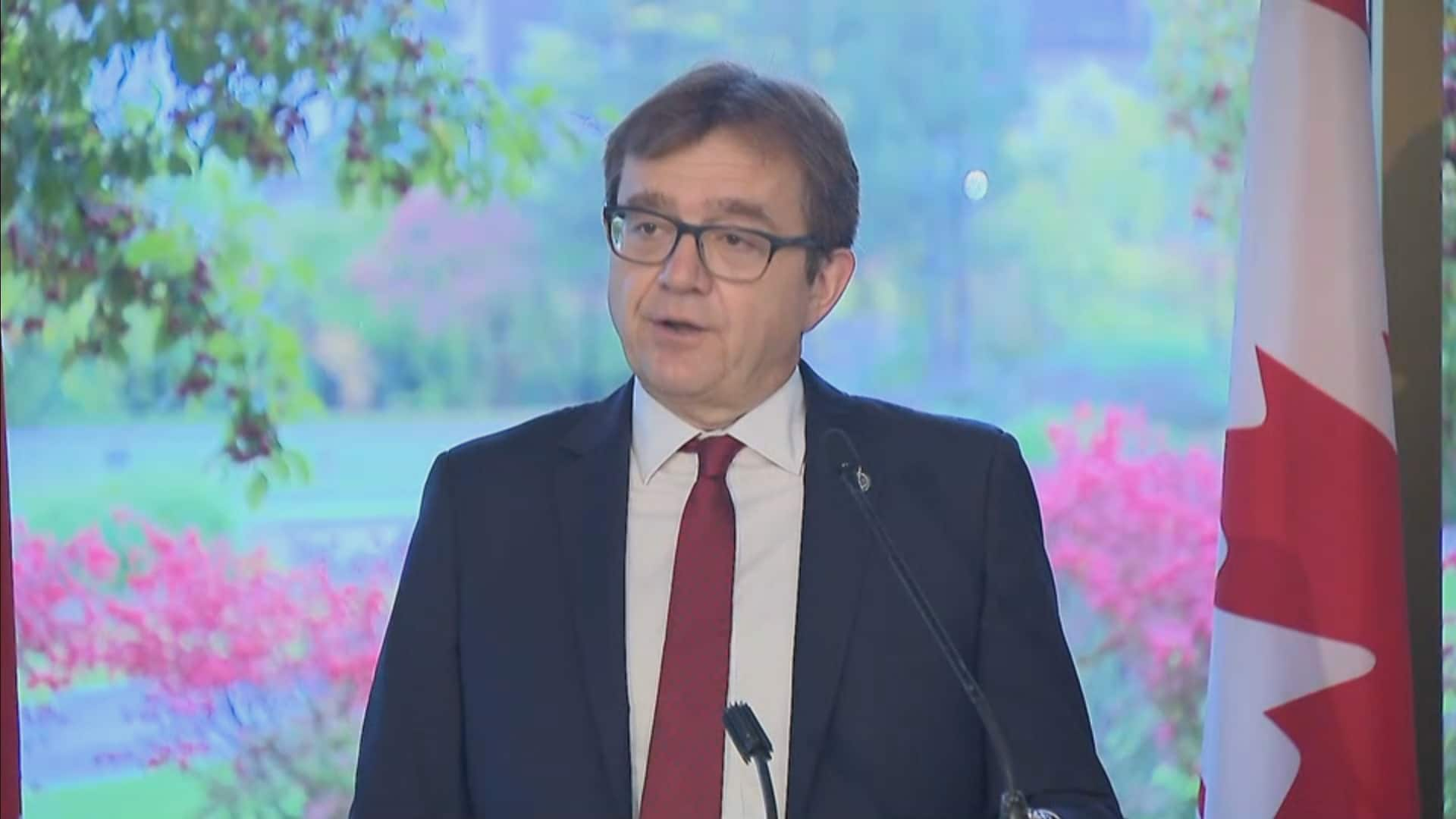Ban on single-use plastic won’t trash Alberta’s recycling hub plans, Ottawa insists
[ad_1]
Ottawa’s ban on certain single-use plastics will support, not sideswipe, Alberta’s plan to establish itself as a continental plastics recycling hub, says the federal environment minister.
On Wednesday, the federal government announced a list of six single-use plastic products including straws, stir sticks and plastic cutlery that will be labelled as toxic and covered in a national ban coming into effect by the end of next year.
Alberta has suggested the ban could infringe on its plans to get the economy back on track, but during his announcement in Ottawa, Jonathan Wilkinson said those concerns are unfounded.
The federal ban will only serve to support Alberta’s strategy, Wilkinson said.
“Alberta has expressed some concerns about the ban,” Wilkinson said. “I would simply say the ban is a very small part of the plastics industry in Canada and the utilization of plastic in Canada.
“It is really focused on those specific items that are very hard to recycle so it’s hard to see how it would have any significant bearing on the development of a recycling industry.”
Wilkinson said the ban will spur investment in recycling infrastructure, drive innovation and product design and generate revenue while creating up to 42,000 direct and indirect jobs across the country.
“In fact, Alberta’s announcement yesterday of its aim to become a centre of excellence for recycling underlies precisely this opportunity,” Wilkinson said.
“I don’t think there is any conflict and, in fact, I applaud Alberta’s commitment.”
Alberta’s UCP government has pinned its hopes of economic recovery in part on the plastics industry.
As announced on Tuesday, Premier Jason Kenney aims to establish Alberta as a continental leader for plastics recycling by 2030.
The province has touted the benefits of a “circular economy” for plastics which involves the products being recycled en masse and reused in new products through enhanced recycling techniques.
The strategy — outlined in the provincial government’s new natural gas strategy — has been touted as a key part of Alberta’s economic recovery.
Kenney has said becoming a major recycling hub for western Canada would create hundreds of jobs, renew industry investment and take a bite out of Alberta’s projected $24.2-billion deficit.
‘Don’t damage us any further’
During a news conference Wednesday, Alberta Energy Minister Sonya Savage suggested the ban could derail those plans.
“It’s another example of Ottawa proceeding in a direction that suits their agenda and their purpose,” Savage said.
“And as the premier has said so often, Ottawa, when they’re moving forward — particularly as we come out of the economic downturn after COVID — they have to approach everything as in do no harm.
“Don’t damage us any further … stay in your own lane, stay in your own constitutional bounds and let Albertans get back to work.”
According to the Chemistry Industry Association of Canada, Alberta’s chemistry and plastics industry was valued at $12.1 billion and employed about 58,400 people directly and indirectly in 2019.
‘The signal it sends’
Plastic production remains one of the fastest-growing industries on the planet and Alberta is well positioned to take advantage of the growth, said Bob Masterson, president and CEO.
However, Masterson said there is concern that Ottawa’s ban may spook international investors, putting a chill on the construction of new recycling and diversion operations.
“It’s unfortunate when we’re in these situations,” Masterson said a few hours before Ottawa announced its detailed list of banned products.
He said industry, the provincial and federal governments all support growth in the recycling industry, “that we have to move to a circular economy for plastics.
“The worry for Alberta and our industry is the signal it sends to external investors. Is Canada a place they want to invest to grow the plastics industry if it’s something that the government is signalling they want to ban?”
“There are differences of opinion on the tactic of whether bans are the right way to go.”
Masterson, however, remains hopeful that Alberta can deliver on its “ambitious plan” to become a major recycling hub.
Alberta is an ideal place to make plastics because manufacturers use natural gas, which is half as energy intensive as other methods, Masterson said.
The province could also drastically improve its plastics recycling approach by adopting a packaging levy and a harmonized collection strategy for municipalities, similar to the policies adopted in B.C., he said.
“There is a lot of work to do, there is no question about that,” Masterson said. ” But the good news for Alberta is they’re pretty much in the same shape as everybody else so it’s not going to be too hard a continental leader and beat our neighbours.
“It’s ambitious, for sure, but where we are as a province and a nation right now is not very strong so there’s lots of room for improvement.”

Environment Minister Jonathan Wilkinson lists six single-use plastics to be banned in Canada beginning 2021. 1:04
Ottawa’s ban, which follows some local bans on single-use plastics, is happening under the Canadian Environmental Protection Act, which required a scientific assessment of the problem first.
That report, released in January, said that in 2016, 29,000 tonnes of plastic garbage, the equivalent of about 2.3 billion single-use plastic water bottles, ended up as litter in Canada — on beaches, in parks, in lakes and even in the air.
The evidence was less clear about the harmful impacts of ingesting microplastics for people and wildlife, and the scientists recommended further study.
At the time, Wilkinson said the evidence on the effects of macroplastics was enough to go ahead with the ban.

[ad_2]
SOURCE NEWS
